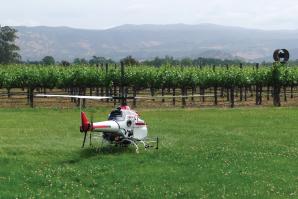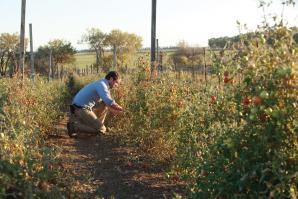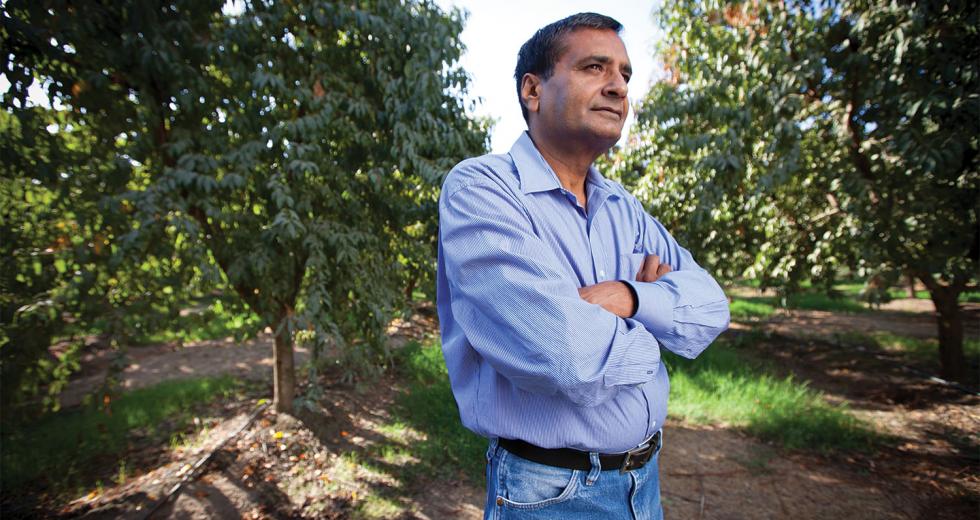Coasting through the sweeping fields of California’s Central Valley, it’s not unusual to spot collections of crouching figures diligently tending crops. These primarily Hispanic immigrants prune, thin, harvest and grow much of California’s renowned produce. But over the past decade or so, hundreds of thousands of these indispensable farm workers have vanished.
A 2000 study from UC Davis shows that, “For California farm workers, future holds little prospect for change.” It reported that California farms employed between 800,000 and 900,000 workers annually. In July 2011, the New York Times reported about 400,000 workers found employment annually.
“The last few years, it seems that the labor supply has been gradually getting tighter,” says Bryan Little, director of labor affairs for the California Farm Bureau Federation. “We don’t know exactly what happened this year, but apparently the bottom just fell out.”
Little suggests the culprit is “a perfect storm” of events affecting immigration. Drug-related border violence has increased U.S. security, boosted immigration crackdowns and deterred cautious migrants from crossing the border and risking incarceration or service to cartels. The Mexican baby boom of the ’70s receded, decreasing pressure to find U.S. jobs, and gains in the Mexican economy contrast with the U.S.’s recent financial ills.
“It’s too early to know exactly what the economic damage might be,” says Little. “We’re just starting to get an idea that there is a significant amount of crops left unharvested — tree fruits and things like that.”
Little says peak hiring months for farm laborers begin in spring and last through summer harvests, but this spring didn’t bring the expected wave of workers. “I had growers tell me that workers they normally start to see in March and April just were not showing up this year,” he says. “I know there were some instances where some (crops) just never got harvested because there weren’t enough people to do it.”
The consequences can be devastating. Raisin producers in Fresno County need a whopping 30,000 workers for six weeks to hand pick grapes and lay them on trays to dry. If they can’t find enough workers to gather the trays before season’s end, the farms could suffer significant losses.
“Raisins have crop insurance,” says Little. “But if you don’t have enough people to get those raisins picked up by a certain date, you could lose that crop insurance.”
Beyond an obvious decrease of manpower, time-sensitive farming tasks and harvest overlap further thin the distribution of labor. Little explains that farmers who grow the first crop of spring, asparagus, “were getting by but didn’t have enough people to do what they really needed.” The next harvest, cherries, Little called “a real train wreck,” as many farmers didn’t have enough hands to pick the fruit. The domino effect continued in the county’s vineyards, where many available farm workers were still wrapping up cherry season at the same time grapevines needed time-sensitive trimming.
“If (the vineyard work) does finally get done, it costs more because there’s more to do,” says Little. “And it may never get done because a lot of those workers who are harvesting cherries may wind up moving up the valley to do pears and peaches, which is usually the next thing that happens in the springtime.”
Orchard fruits may be the hardest hit of the Central Valley. Peaches, for example, require thinning at specific times or the fruit receives inadequate nutrition and weighs in under market size. Small fruit doesn’t sell.
“This year we did not have enough people for the thinning,” says orchard owner Kulwant Johl. “If farmers did not get to do that on time, that’s a problem because the fruit is small. If you have too many peaches, they don’t grow that big, and to be processed they must be a certain size.”
Johl farms 1,000 acres in Yuba City with 25 percent of his land devoted to peaches. He needed at least 50 workers to complete the critical task of thinning from mid-May to mid-June but only had 35.
“(Officials) really seal the border, so it’s getting very hard for workers from Mexico to get here,” Johl says. “That makes a shortage here on the farm.”
Tim Melchiori of the California Canning Peach Association says that, as of harvest completion on Sept. 8, the state brought in 367,000 tons of cling peaches this year — 13 percent less than the 2012 estimate and 6.6 percent less than 2011. It’s California’s smallest peach harvest in five years and the second smallest in the past 12.
“I know there were some instances where some (crops) just never got harvested because there weren’t enough people to do it.”
Bryan Little, director of labor affairs, California Farm Bureau Federation
Johl knows he lost income to a lack of farm workers this year — though it’s too early to tell just how much — but he has other crops to fall back on, such as walnuts, which use a mechanized harvest process as opposed to human labor. But if Central Valley farm workers continue to decline, he says his orchard options are limited.
“I will have to take out these peach trees and plant something
else,” he says. “It’s already happening. Peach farmers are taking
out peaches and planting walnuts and almonds.” Johl further
suggests continuing declines in labor availability could cause
California-grown peaches to become a thing of the past.
Little has seen similar produce threats around the country. Alabama and Georgia use the government work verification program E-Verify, which monitors employee eligibility and, he says, discourages illegal farm workers from attempting to work in those states.
“The Vidalia onion producers in southern Georgia are having a really hard time finding people to do what they need to do,” he says. “The ultimate result of that might be that the Vidalia onions harvested in south Georgia — which have been around for the last 75 or 80 years — may just not continue.”
Not all farms suffer to this extent, however, says Dan Best, manager of Sacramento’s Certified Farmers’ Markets. Because smaller farms such as those selling at local markets employ significantly less immigrant labor, they feel fewer trickle-down effects from the farm worker decrease.
Local seller Caypay Organic grows 100 varieties of fruits and vegetables, selling at local farmers’ markets and providing year-round deliveries to the community-supported agriculture program Farm Fresh To You. Communications Manager Barbara Archer says their consistent demand for workers helps protect them from unstable hiring.
“We don’t really have that trouble because we’re able to employ most of our workers year-round,” she says. “They know they have a steady job with us.”
General manager Shannin Stein of Feeding Crane Farms, a Natomas farm that supplies local markets and eateries, says their small operation employs just seven people, none of which are immigrants.
But using domestic folks for farm labor on a statewide scale has not been a viable option, says Little. He cites an unsuccessful government effort in the late ’90s to have jobless Americans work in agriculture in order to receive welfare checks.
“Very, very few people presented themselves for that kind of work,” he says. “A lot of Americans have sort of self-selected away from doing agricultural work because it’s hard, it’s physically demanding, it takes place outdoors. It’s kind of hard to air condition an orchard, so it’s not as comfortable as working in a Walmart.”
But farmers’ market manager Best proposes that more Americans should take these farm jobs as immigrant numbers are dwindling. “If the American citizen that is looking for a job would want to go out and pick fruit for a living, that would solve a lot of our unemployment problems,” he says.
If no one takes the jobs, he adds, the task could go to a machine — expensive equipment unable to select or handle the fruit like human eyes and hands. But some farmers, he says, have no other choice.
“Well, they can look for an alternative like some sort of a mechanization, which is costly, or they go out of business,” Best says. “The product doesn’t pick itself.”
Recommended For You

The Robots are Coming
Technologies of tomorrow are making their way onto the crop fields of today
Scientists, engineers and entrepreneurs are racing to give farmers tools to boost agricultural productivity. These five technologies — some big, some small — could change the face of farming.

Land of the Fee
Can micro loans dig farmers out of their financial holes?
Today’s small farmer climbs an uphill battle to find land, secure capital and overcome the hefty start-up costs. Today, farmers make up less than 1 percent of the population (compared to 15 percent in 1950), they tend to be older (the average age is 57) and about 25 percent are expected to retire in the next 20 years. “This is a new problem for human society,” writes Sharon Astyk, author of “A Nation of Farmers.”




Comments
If you know a farmer that as labor shortage and need quality help from Guatemala please feel free to contact us at info@h2alabor.com